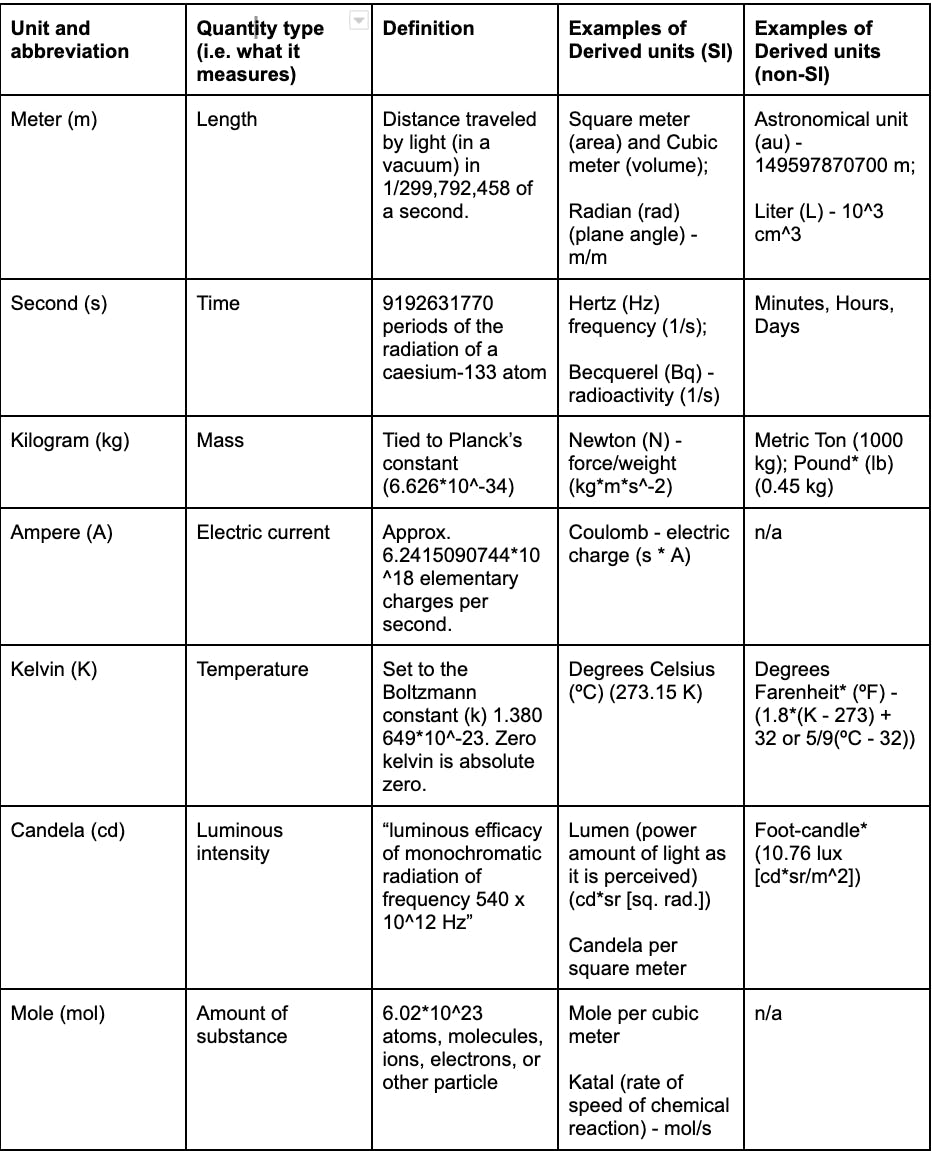TL;DR Science SI Units of Measure and the metric system
By Thomas P.
February 23, 2022 · 1 minute read
Statistics
Mathematics
You may be familiar with many of the measures called the metric system and the customary system, but what do you know about the inner workings of the measures used by the scientific community?
This article will give many examples of units that are used by scientists. However, note that not all units that are used by such are International System (SI) units sanctioned by the governing body the International Bureau of Weights and Measures. For example, despite the liter being an internationally recognized metric unit of volume, it is not an SI derived unit. Interestingly enough, this organization also regulates the Universal Time Coordinated (UTC) time standard, which is used instead of local timezones in conducting international affairs, as well as comparing different time zones to each other. For example, Eastern Standard Time (EST) has a UTC offset of UTC-5 or UTC-4 hours depending on whether Daylight Savings Time is in effect.
The SI system of measurements has seven base units of measure - in which all other units are further derived. The following table gives other derived units along with the corresponding base unit:

*All derived, non-SI units that are listed are accepted by the scientific community except those with an asterisk.
Did you enjoy this article?
About The Author
Thomas is a student at Eastside High School.